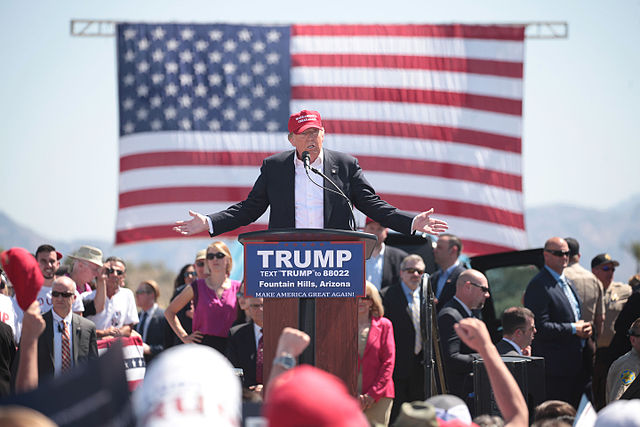The Trump Campaign's Nasty Habit of Violating Journalists' Rights
by Mike Rispoli
April 18, 2016
After initially charging Donald Trump’s campaign manager, Corey Lewandowski, with battery for assaulting journalist Michelle Fields, Florida prosecutors announced last Thursday that they will drop the charge.
This case is yet another example of how the Trump campaign has violated journalists’ constitutional rights. From the beginning, the campaign and those affiliated with it have displayed a pattern of hostility and abuse toward journalists.
Given this pattern, this needs to be said unequivocally: The Trump campaign is an enemy of press freedom.
Here are just a few examples. A Trump bodyguard forcibly removed Univision anchor Jorge Ramos from a press conference last August for asking tough questions, and the campaign has blocked the network on multiple occasions from covering Trump events. Last November, Lewandowski screamed at a CNN reporter and threatened to blacklist him for stepping outside a press pen during a rally in Worcester, Massachusetts. In February, a Secret Service agent choke-slammed a photojournalist for TIME for going outside a media pen to take a photograph.
In the case of Lewandowski and Fields, the campaign manager manhandled a journalist for doing her job. After Fields spoke out and video of the incident was released, the Trump campaign reacted with more hostile language toward the media. Campaign spokesperson Katrina Pierson even suggested that campaigns should further restrict press freedom.
“If anything, perhaps campaigns, particularly presidential campaigns, should begin to change the rules of the type of access the press gets from here on,” Pierson told CNN.
The campaign also engaged in typical victim-blaming tactics and responses, claiming Fields made up the story or exaggerated. What may be worse is that members of the media — including Field’s own employer, Breitbart — responded with similar victim-blaming language.
Journalists who cover crime, protests or war zones must accept that their work is inherently risky. But there shouldn’t be anything dangerous about covering campaign events for political candidates.
All campaigns need to uphold the values of free speech and a free press. They shouldn’t use bullying tactics to chill speech and silence journalists. And while some of Trump’s opponents have also interfered with journalists covering events, the actions of the Trump campaign are beyond the pale.
The Lewandowski incident was shocking — but hardly surprising given the history of Trump’s campaign. Lewandowski has a reputation for being a hothead, and his slash-and-burn style fits with the Trump campaign’s ideology of anger and violence.
Trump himself is responsible for creating that culture, and has said that he is beyond reproach. It’s no wonder, then, that aides and supporters find it acceptable to assault journalists or people of color who protest the candidate’s vitriolic rhetoric.
The media deserve plenty of criticism for tolerating Trump’s racism and xenophobia. They also deserve criticism for failing to denounce the ways in which the Trump campaign has tried to silence the press.
Instead, too many media figures tear down journalists like Fields or even root for Trump’s success, as did CBS CEO Les Moonves, who in February admitted that the candidate “may not be good for America but [is] damn good for CBS.” It sends a dangerous signal to the newsroom when your boss, instead of standing up for press freedom, stands up for ratings and audience share.
It’s understandable that some members of the press want to stay above the fray and away from engaging with Trump for fear of violating rules of objectivity. But for the sake of our democracy, they can’t remain neutral in the fight for freedom of the press.
